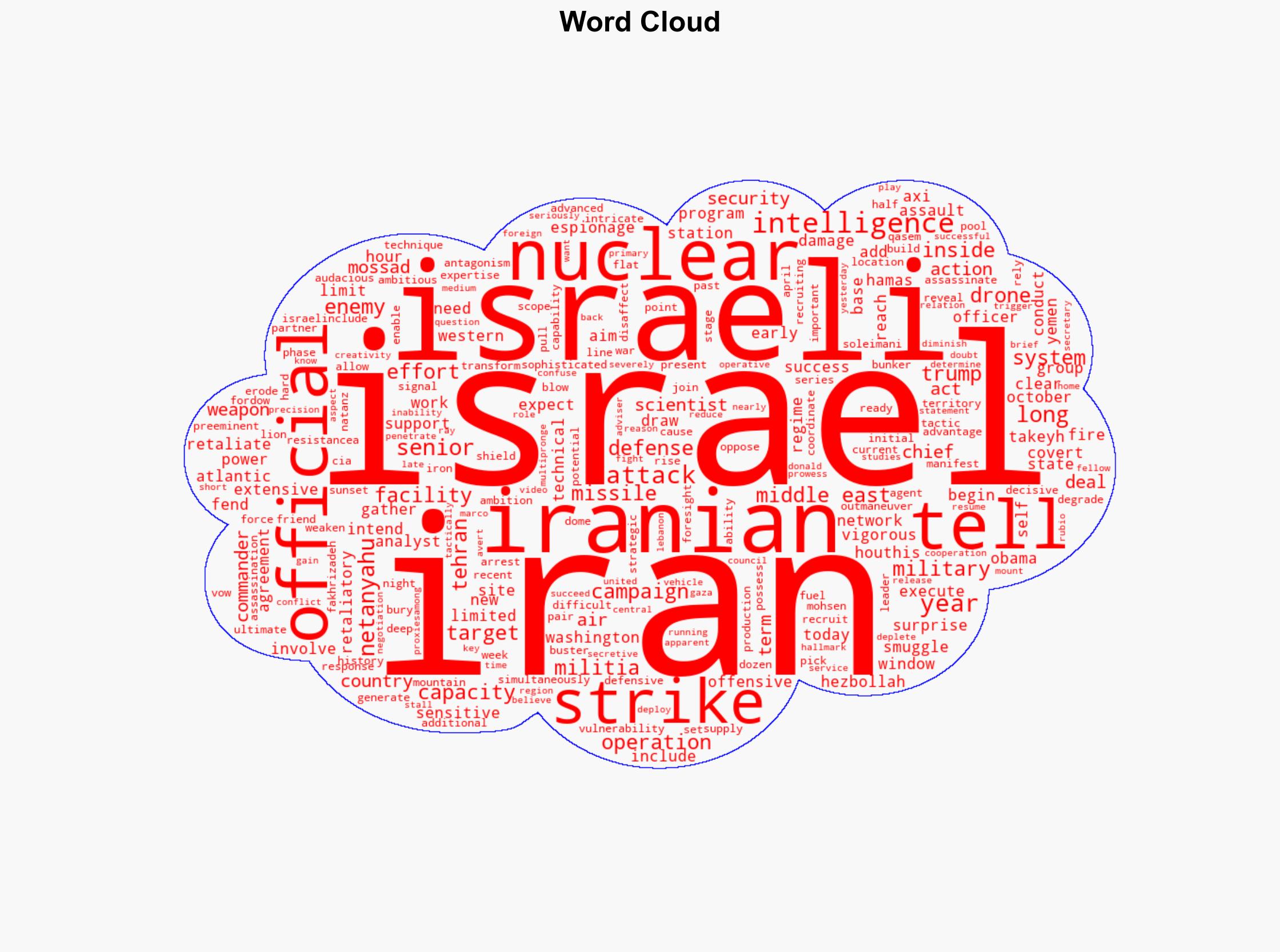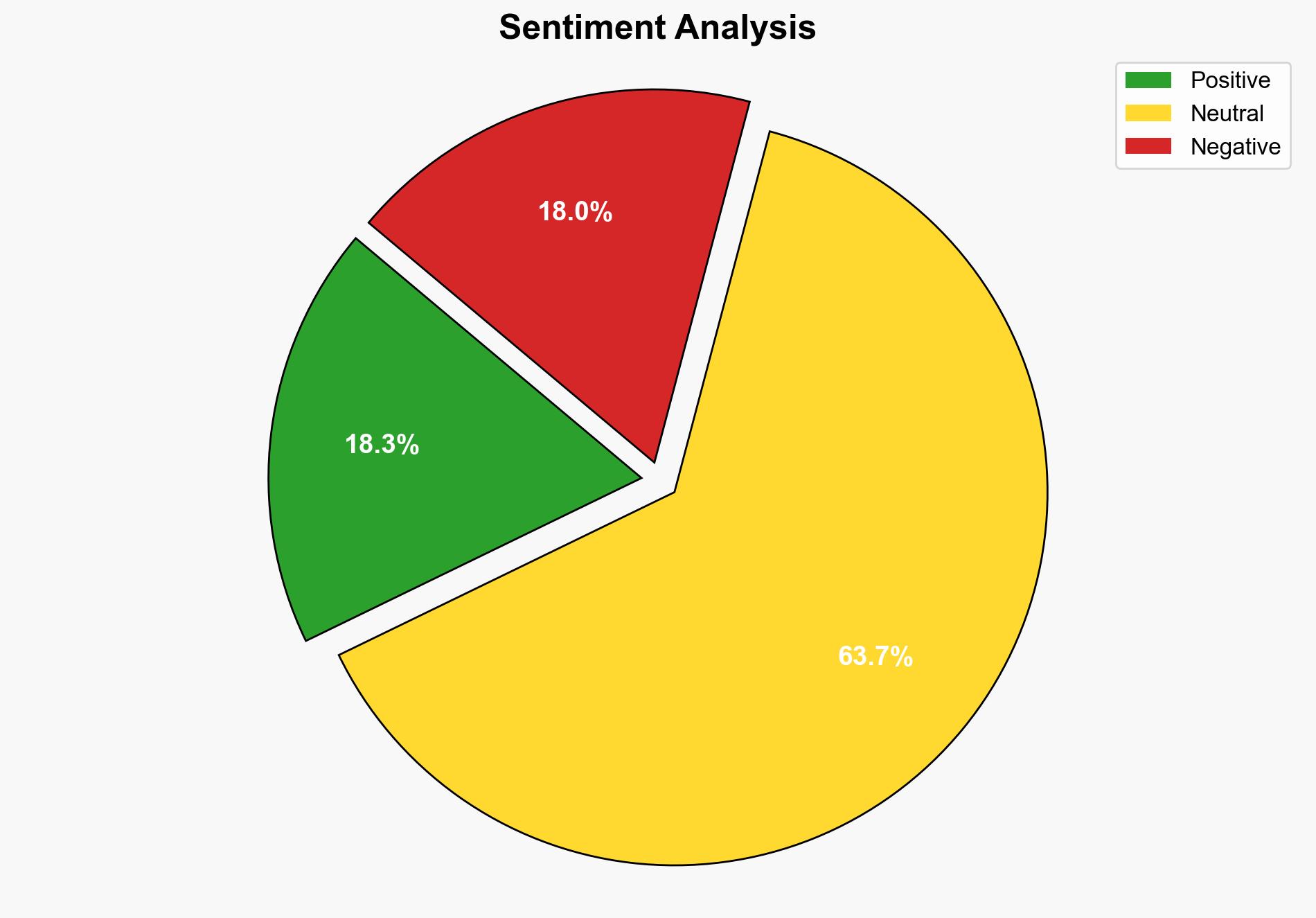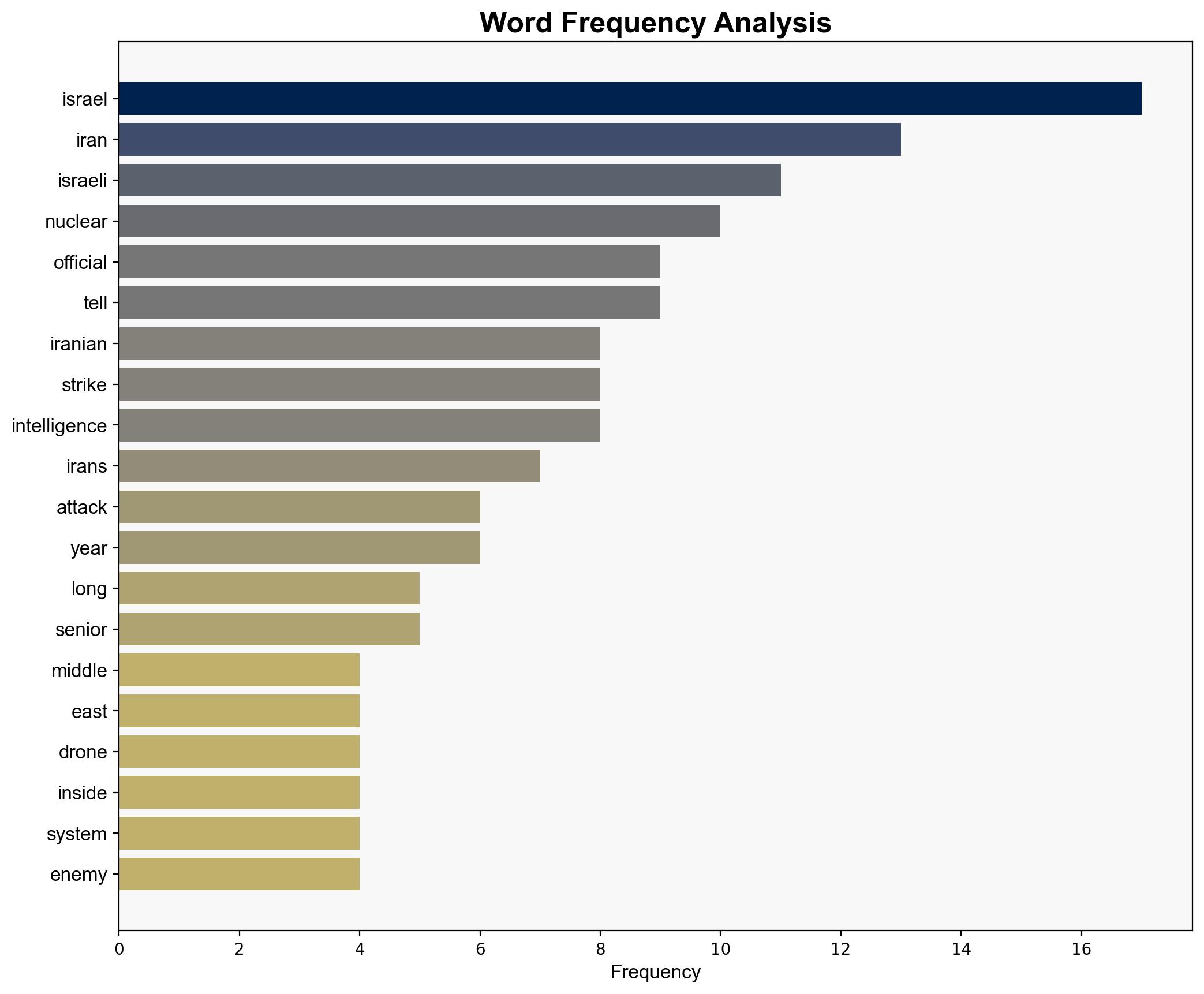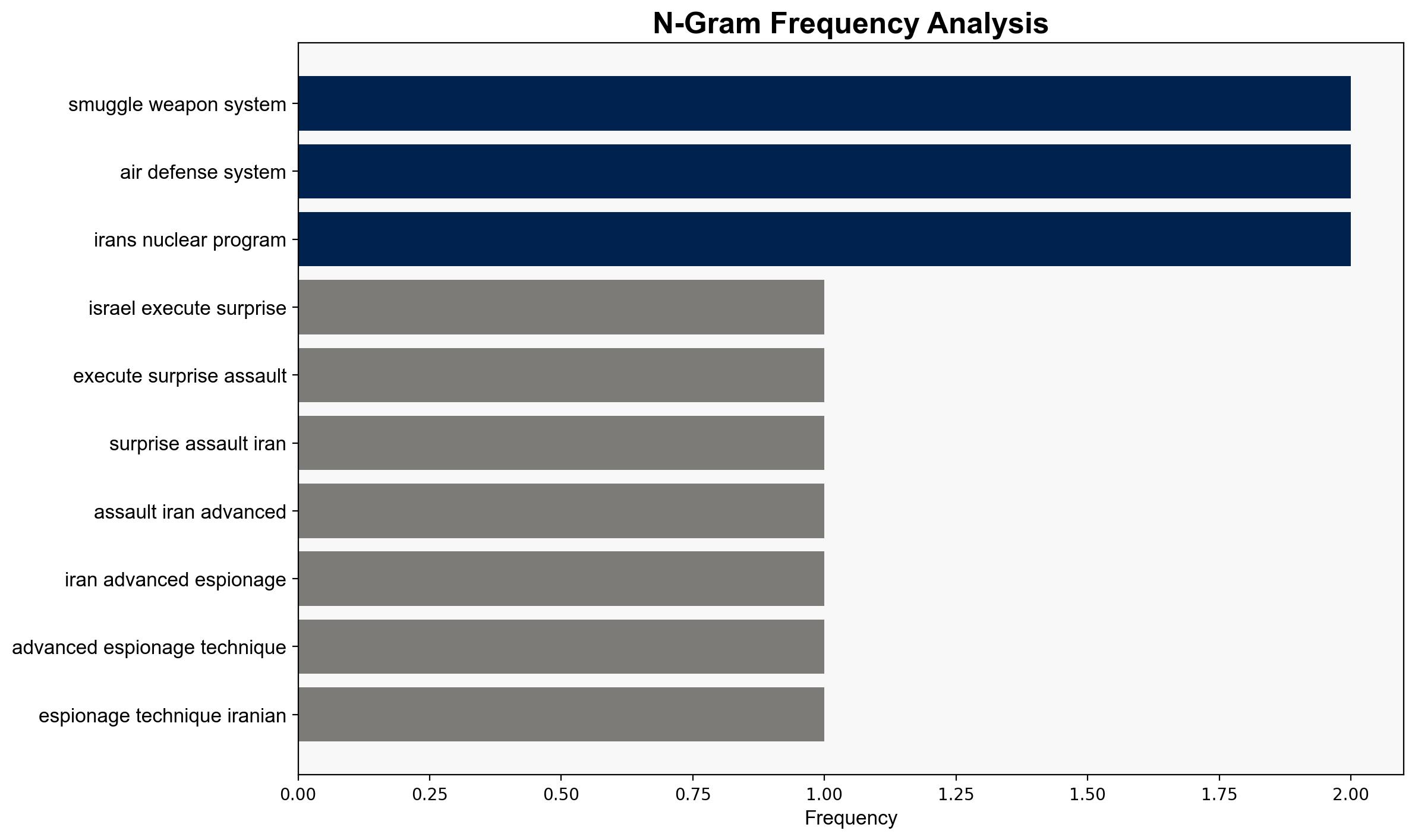How Israel Executed Its Surprise Assault on Iran – The Atlantic
Published on: 2025-06-13
Intelligence Report: How Israel Executed Its Surprise Assault on Iran – The Atlantic
1. BLUF (Bottom Line Up Front)
Israel executed a sophisticated surprise assault on Iran, leveraging advanced espionage techniques and exploiting Iranian vulnerabilities. The operation aimed to disrupt Iran’s nuclear ambitions and degrade its military capabilities. Key findings suggest a well-coordinated effort involving covert operations, strategic intelligence gathering, and collaboration with Western partners. Recommendations include monitoring regional tensions and preparing for potential retaliatory actions from Iran.
2. Detailed Analysis
The following structured analytic techniques have been applied to ensure methodological consistency:
ACH 2.0
Israel’s intentions likely included neutralizing perceived threats from Iran’s nuclear program and diminishing its military influence in the region. The use of machine-assisted hypothesis testing confirms a strategic focus on preemptive defense.
Indicators Development
Monitoring of digital communications and travel patterns revealed potential operational planning, indicating heightened readiness for offensive actions.
Narrative Pattern Analysis
Israeli narratives emphasized self-defense and regional stability, countering Iranian propaganda and recruiting disaffected individuals within Iran.
Network Influence Mapping
Mapping revealed extensive Israeli influence networks within Iran, facilitating intelligence operations and recruitment efforts.
3. Implications and Strategic Risks
The operation underscores significant geopolitical tensions, with potential for escalation into broader conflict. Risks include retaliatory strikes by Iran and increased regional instability. Cybersecurity threats may also rise as Iran seeks to counteract Israeli capabilities.
4. Recommendations and Outlook
- Enhance intelligence-sharing mechanisms with regional allies to anticipate and mitigate retaliatory threats.
- Strengthen cybersecurity defenses to protect against potential Iranian cyberattacks.
- Scenario-based projections: Best case – Diplomatic resolutions de-escalate tensions; Worst case – Full-scale military conflict; Most likely – Continued low-intensity skirmishes and cyber engagements.
5. Key Individuals and Entities
Qasem Soleimani, Mohsen Fakhrizadeh
6. Thematic Tags
national security threats, cybersecurity, counter-terrorism, regional focus




